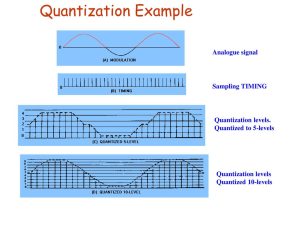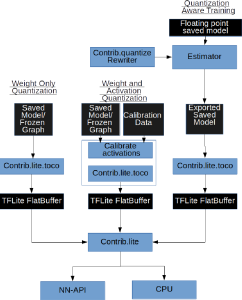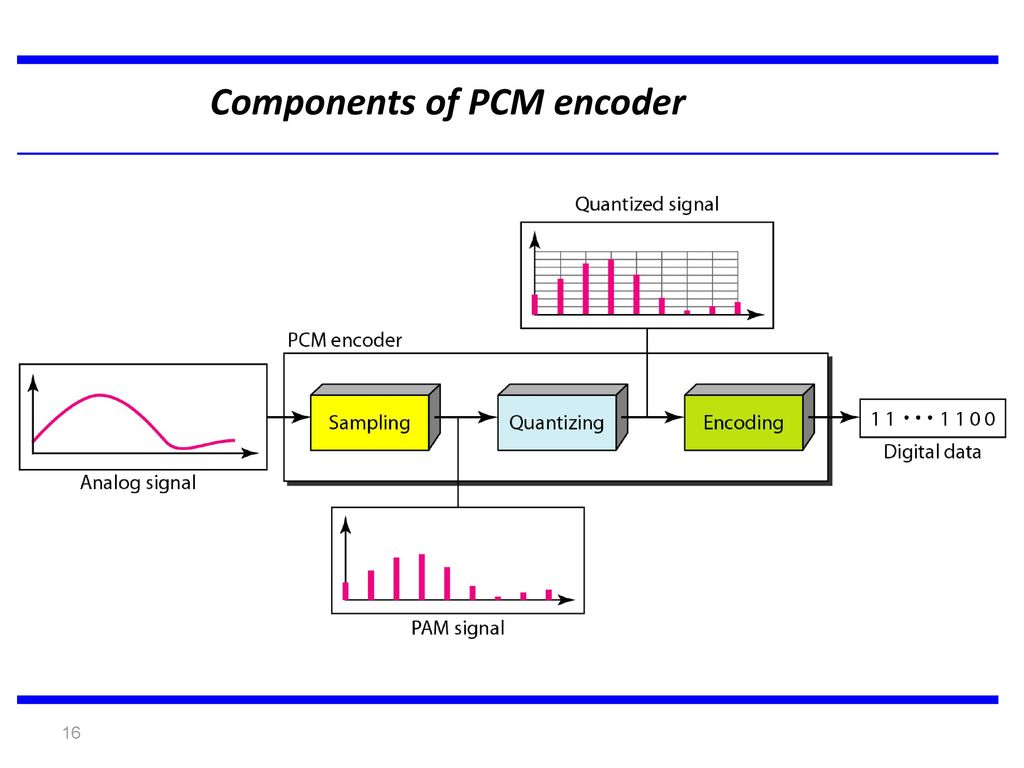The enigmatic concept of CSI quantization holds tremendous weight in wireless communication systems. Its purpose is to transform continuous channel state information into discrete values, and its importance cannot be overstated. CSI feedback accuracy and reliability are directly proportional to the success of system optimization.

Unraveling the mysteries surrounding CSI quantization effects requires a thorough analysis of their impact on system performance. This analytical evaluation is critical for understanding the delicate balance between CSI resolution and overhead while identifying optimal parameters that can improve overall system efficiency.
Broadband multipath channels are no exception when it comes to evaluating wireless communication systems. Multipath propagation occurs due to signals bouncing off obstacles or bending around them, resulting in multiple signal paths arriving at the receiver with varying delays and amplitudes. Quantization error can significantly affect these complex channels, leading to reduced data rates and inaccurate channel estimation.
Characterization of CSI Quantization Effects: Analyzing the Impact on System Performance
Contents
- 1 Characterization of CSI Quantization Effects: Analyzing the Impact on System Performance
- 2 Quantization Effects on Broadband Multipath: Examining the Impact on Wireless Communications
- 3 CSI Feedback and Quantization: Exploring the Relationship between Channel State Information and Quantization
- 4 MIMO Systems and CSI Quantization: Understanding the Effect on Multiple Antenna Systems
- 5 Pilot-Aided CSI Quantization: Evaluating the Performance of Feedback Schemes in Practical Systems
- 6 Optimization of CSI Quantization: Identifying Optimal Parameters for Improved System Performance
- 7 Related Papers on CSI Quantization: Reviewing Research on Quantization and Its Effect on Wireless Communication Systems
In the realm of wireless communication systems, quantization is a prerequisite process that transforms continuous channel state information (CSI) into an intermittent configuration. This subsequently feeds back from the receiver to the transmitter and used for adaptive transmission and beamforming. Nevertheless, this quintessence technique introduces discrepancies in the feedback loop that can severely affect system performance.

Numerous analytical studies have been carried out to scrutinize how CSI quantization impacts wireless communication systems. These analyses have revealed that increasing quantization bits diminishes errors but augments feedback overheads. Furthermore, excessive bit allocation may result in declining returns due to extraneous noise and other interferences.
Recent research has delved into optimizing CSI parameters for enhanced system performance by identifying optimal bit allocation schemes based on fluctuating channel conditions or minimizing feedback overhead through compression techniques like differential encoding or principal component analysis (PCA). Overall, comprehending how CSI quantization effects impact system operation is vital for constructing reliable and efficient wireless communication networks.
Quantization Effects on Broadband Multipath: Examining the Impact on Wireless Communications
The role of quantization effects on broadband multipath is crucial in determining the performance of wireless communication systems, but it’s not a simple matter. Multi-user scenarios further complicate optimization efforts, with limited feedback channels and pesky quantizers restricting the number of bits per vector. It’s enough to make one dizzy just thinking about it all.
Antenna arrays can help combat fading channels caused by multipath propagation, which sounds great until you consider how quantization errors during CSI feedback can severely impact signal quality and degrade overall system performance. Yikes!
Thankfully, there are solutions that aim to optimize the trade-off between quantization error and system performance in broadband multipath environments. Vector quantization methods have been proposed as an alternative to scalar schemes for reducing distortion by grouping similar vectors together before applying scalar quantizers. While this approach improves accuracy at low bit rates compared to traditional scalar approaches for limited feedback systems, it also increases computational complexity due to codebook generation requirements.
It’s clear that optimizing CSI quantization is critical for improving wireless communication systems’ efficiency in broadband multipath environments. Techniques such as precoding and antenna arrays can help mitigate fading channel effects; however, they require careful consideration when dealing with limited feedback channels and restricted numbers of bits per vector during CSI feedback processes. Vector Quantization methods provide an effective solution for reducing distortion while maintaining accuracy but come at increased computational costs due to codebook generation requirements – talk about a head-scratcher!
CSI Feedback and Quantization: Exploring the Relationship between Channel State Information and Quantization
Wireless communication systems rely heavily on the intricate components of CSI feedback and quantization, both of which are absolutely vital for success. The downlink transmission optimization achieved through beamforming is entirely dependent upon the transmitter and receiver’s ability to accurately interpret Channel State Information (CSI). However, this information must first be sent from the receiver back to the transmitter via CSI feedback. Once received, it is then encoded using a codebook and quantizer into a finite set of bits as part of CSI quantization.
Although extensively studied, CSI quantization effects continue to perplex even seasoned professionals in their field. These effects have been known to cause significant degradation in system performance – particularly in practical scenarios where side information may be limited or completely unavailable. Quantized CSI can result in errors that drastically affect beamforming accuracy; ultimately leading to reduced signal strength and increased interference.
To improve wireless communication systems’ overall reliability, experts have delved deep into analyzing how broadband multipath is affected by these unpredictable forces. Pilot-aided schemes have been proposed for evaluating feedback performance under varying levels of channel coherence time while optimization techniques such as vector perturbation have also been explored for identifying optimal parameters that minimize degradation caused by quantized CSI while simultaneously maximizing system capacity and throughput.
MIMO Systems and CSI Quantization: Understanding the Effect on Multiple Antenna Systems
MIMO systems, with their capacity-enhancing and reliability-boosting abilities, have become a staple in the realm of wireless communication. However, to ensure peak performance from these systems, instantaneous CSI at the transmitter must be precisely known – a feat that requires channel quantization. And oh boy, does this quantization ever impact MIMO system performance! The research surrounding this topic is anything but stagnant.
When it comes to imperfect CSI feedback in practical MIMO systems (which let’s face it – they all are), two popular quantization schemes come into play: Random Vector Quantization (RVQ) and statistical characterization techniques. Out of the two, RVQ-based methods reign supreme thanks to their ability to exploit spatial correlation between antennas for optimal performance. But don’t count out statistical characterization techniques just yet! Using statistical properties of the channel instead of transmitting raw data results in reduced feedback overhead while still maintaining reasonable accuracy.
Now here’s where things get really interesting – mitigating imperfect CSI assumptions on MIMO system performance can be accomplished through parameter optimization such as codebook size, number of quantization bits and feedback rate…just to name a few! But hold your horses because optimal parameters depend on several factors like transmission mode and traffic load alongside good ol’ fashioned channel quality and modulation scheme selection. With so many moving parts involved in designing practical CSI feedback mechanisms that balance complexity with accuracy for different scenarios…well let’s just say you better put your thinking cap on if you want success in this game!
Pilot-Aided CSI Quantization: Evaluating the Performance of Feedback Schemes in Practical Systems
The use of pilot-aided CSI quantization as a feedback scheme for estimating channel frequency response has been shown to significantly enhance the performance of wireless communication systems that rely on limited feedback channels. However, this approach is not without its flaws. The impact of quantization effects and power control issues can lead to performance degradation.
To ensure optimal results in practical systems, it becomes imperative to optimize the pilot-aided CSI quantization technique under different channel conditions. In fact, an inefficient codeword design and power allocation strategy could have significant repercussions on system performance. If the codewords are not orthogonal or i.i.d., interference between them may occur leading to a loss in performance due to correlation.
Researchers have proposed various techniques such as Gaussian random vector quantization (RVQ) and codebook design based on channel quality indicator (CQI) to overcome these challenges while maintaining high system capacity. These methods aim at reducing the impact of quantization effects while ensuring maximum throughput capacity through efficient power control algorithms that compensate for variations in fading conditions.
Overall, despite its shortcomings, pilot-aided CSI quantization remains an effective means of enhancing wireless communication system performance using limited feedback channels if optimized correctly through codeword design and power allocation strategies tailored towards specific channel conditions.
Optimization of CSI Quantization: Identifying Optimal Parameters for Improved System Performance
The optimization of CSI quantization in IEEE wireless communications is a perplexing and bursting area of research. The aim is to unravel the optimal parameters for enhanced system performance when transmitting data over a labyrinthine channel using multiple transmit antennas. One approach involves limited-feedback, where the receiver sends back information about the representation of the channel, which can be used to optimize transmission.
Intriguingly, results show that selecting suitable system parameters such as frequency division and scheduled-based feedback can lead to substantial performance improvement; this effect is most pronounced at high SNRs. Moreover, tuning the number of bits used for quantization could also have an affirmative impact on overall system performance.
When grappling with MIMO channels, it becomes even more pressing to decipher optimal parameters since there are myriad variables at play. Nonetheless, by judiciously choosing feedback mechanisms and adjusting other settings based on empirical results, it makes it possible to achieve excellent outcomes even in complex scenarios.
Related Papers on CSI Quantization: Reviewing Research on Quantization and Its Effect on Wireless Communication Systems
The realm of CSI quantization has delved into a myriad of factors that impact wireless communication systems, leaving researchers with an array of perplexing questions. One such factor is the channel coherence time, whose enigmatic influence on CSI feedback accuracy subsequently results in a bursty system performance. In one captivating study by Li et al., it was uncovered that longer coherence times unleash better channel estimation and higher signal-to-noise ratio (SNR) for single-user communication scenarios.
Another area of research has focused on optimizing the amount of feedback required for efficient transmission, yet this conundrum remains unresolved. In Wu et al.’s paper, they proposed an adaptive power allocation scheme to reduce the amount of CSIT feedback needed while still maintaining high channel capacity. The authors utilized an optimization algorithm to determine the optimal precoding matrix based on limited CSIR information, resulting in improved system efficiency that left many bewildered.
Other related papers have scrutinized different communication scenarios and their specific requirements for CSI quantization; each finding more confounding than the last. For instance, Zhou et al.’s study revealed multi-user MIMO systems demand more accurate CSIT feedback than single-user systems due to increased interference between users – a fact seemingly paradoxical at first glance. Such findings underscore how complex CSI quantization is and reiterate why tailored solutions are crucial when dealing with wireless communication systems’ inscrutable nature.


